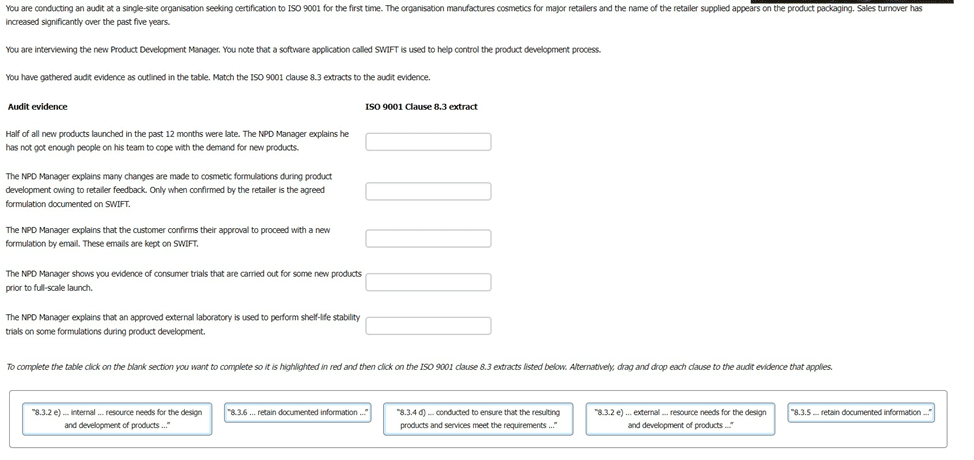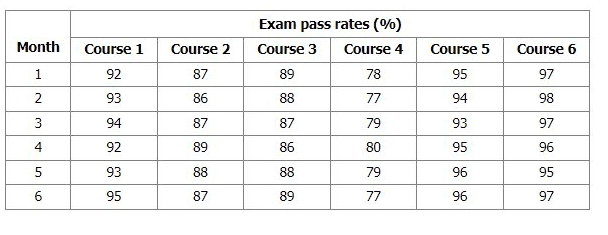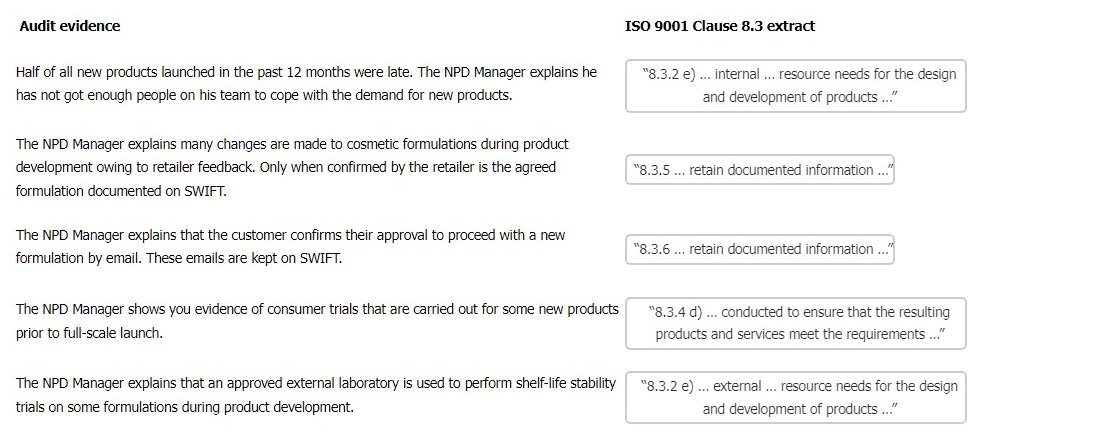PECB ISO-9001-Lead-Auditor - QMS ISO 9001:2015 Lead Auditor Exam
The Closing meeting of a second-party audit was planned for 6 pm with the general manager and the quality manager.
At 6 pm, when the audit team enters the meeting room, only the Quality Manager is present and walting for them.
The dialogue among them is as follows:
Auditor team leader: "Good evening, could you please inform the general manager that we are ready to start with the closing meeting?"
Quality manager: "Good evening. I am sorry to inform you that the general manager will not be able to attend the meeting. He will try to
participate virtually to make some closing remarks."
Auditor team leader: "OK. We identified seven nonconformities - these are the reports. Could you please review them and sign them?"
Quality manager: "OK. As you know, I reviewed them after yesterday's meeting and accept of all them, where shall I sign?"
General manager (from speakers in the room and addressing the quality manager): "Hold on! Do not sign the two nonconformities related to ABC
Bank! I have just checked, and we did not provide any services to ABC Bank during September! You can sign the remaining five nonconformities."
How would you proceed with the audit? Select one.
The certification body has not been able to verify the implementation of corrective actions for any identified major nonconformity within six months after the last day of the Stage 2 audit. What must the certification body do in this case?
Consultancy ABC, which is a subsidiary of a certification body called ABC-CERT, provided consultancy services regarding the implementation of a QMS based on ISO 9001 to an organization. Considering this, can ABC-CERT provide certification services to the organization which obtained consultancy services from Consultancy ABC?
Which of the following is a record related to the audit program that should be managed and maintained?
What does the application of the process approach in a QMS enable?
You, as auditor, are in dialogue with the quality lead and managing director of a small business that supplies specialist
laboratory equipment and furniture.
You: "I'd like to look at how you manage change in the organisation. What changes have you made as a business, say,
over the last 12 months?"
Auditee: "We have made some strategic changes, the main one being that we no longer manufacture our own products
in house."
You: "That sounds like quite a significant change. What has been the impact of that?"
Auditee: "We now mainly sell other manufacturers' products, under their brand names, and have outsourced
manufacture of our own brand products to one of our suppliers. Unfortunately, we had to make six members of our staff
redundant. This represents about 20% of our workforce, so this has been quite a challenging time."
This scenario presents a number of audit trails to different ISO 9001 requirements.
Which three of the following requirements would be relevant audit trails for this scenario?
You are conducting an audit at a single-site organisation seeking certification to ISO 9001 for the first time. The organisation manufactures cosmetics for major retailers and the name of the retailer supplied appears on the product packaging. Sales turnover has increased significantly over the past five years
You are interviewing the new Product Development Manager. You note that a software application called SWIFT is used to help control the product development process.
You have gathered audit evidence as outlined in the table. Match the ISO 9001 clause 8.3 extracts to the audit evidence.

You are carrying out an audit at an organisation seeking certification to ISO 9001 for the first time. The organisation offers health and safety training to customers. Training courses are offered either as open courses, delivered at a public venue, or online, or as courses that are tailored to meet specific requirements. The business operates from a single office and those who deliver the training are either full-time employees or subcontractors.
You are interviewing the Training Manager (TM).
You: "What quality objectives apply to the training process?"
TM: "One of the quality objectives we aim for is a 90% minimum exam pass rate for all open training courses."
You: "How do you measure this objective?"
The Training Manager shows you a record on her computer and you see the following:

Which two of the following statements are true?
Scenario 2:
Bell is a Canadian food manufacturing company that operates globally. Their main products include nuts, dried fruits, and confections. Bell has always prioritized product quality and has maintained a good reputation for many years. However, the company's production error rate increased significantly, leading to more customer complaints.
To increase efficiency and customer satisfaction, Bell implemented a Quality Management System (QMS) based on ISO 9001. The top management established a QMS implementation team comprising five middle managers from various departments, including Leslie, the quality manager.
Leslie was responsible for assigning responsibilities and authorities for QMS-related roles. He also suggested including a top management representative in the QMS team, but top management declined due to other priorities.
The team defined the QMS scope as:
"The scope of the QMS includes all activities related to food processing."
Leslie established a quality policy and presented it to the team for review before top management approval. Top management also proposed a new strategy for handling customer complaints, requiring biweekly customer surveys to monitor customer perceptions.
In scenario 2, the team determined the QMS scope by taking into account only the requirements of top management. Is this compliant with ISO 9001?
A small cleaning services organisation is about to start work on a hospital cleaning contract for the local Health Trust. You,
as auditor, are conducting a Stage 2 audit to ISO 9001 and review the contract with the Service Manager. The contract
requires that a cleaning plan is produced.
You: "How was the cleaning plan for the contract developed?"
Service Manager: "We have a basic template that covers the materials, labour requirements and cleaning methods to be
employed. Some of that is specified by the customer."
You: "How does the plan deal with locations like the intensive care wards and the operating theatres, which are included
in the contract?"
Service Manager: "The basic plan covers general wards, but we will do more frequent cleaning in those areas if the
hospital requests it."
You: "Are you aware of the regulatory requirements for cleaning standards in hospitals?"
Service Manager: "No. We depend on the hospital to look after that side of things in the contract."
You decide to raise a non-conformity against section 8.2.2.a.1 of ISO 9001.
You decide to raise another non-conformity against section 8.2.4 of ISO 9001 when finding that the
cleaning plan was amended without the agreement of the Health Trust. A different cleaning chemical was
substituted to that specified in the contract. At the follow-up audit, the corrective action proposed was to
"obtain a concession from the Health Trust for use of the new chemical."
Which one of the following options is the reason why you did not accept this action taken?





